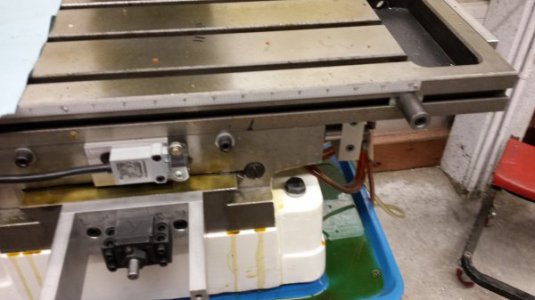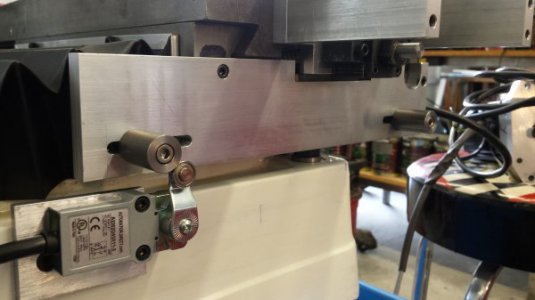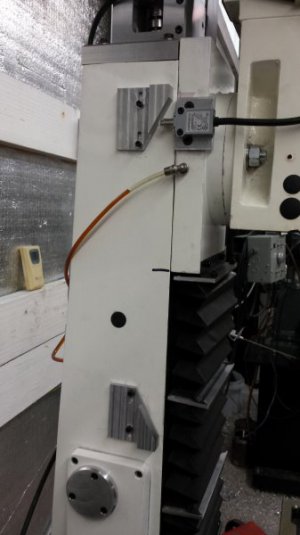That looks like a good setup, just the way I would do it.

But..........Now I get to climb up on my soapbox

I see no reason to have home switches on a mill at all. The only exception to this would be on the Z axis to insure a parking position for an automatic tool changer that requires the Z to be in a specific position.
IMHO the ''home position'' should be a variable ''parking position'', settable on the fly. All coordinates should be relative to the work 0,0,0 position.
To accommodate a power fail or other catastrophe that causes a zero loss, a datum point can be set up somewhere within the work envelope of the machine. When using a vice, I normally set the datum to the vice surfaces, and in most cases this is also the work zero. When work is bolted directly to the table, I know the location of the fixture or work edges or the location of some feature on the work, or in the rare case that it is not possible to do that, will set a datum by bolting a small piece of scrap to the table somewhere and just move over it and spot a small divot at a known location.
The idea of having two coordinate systems (machine and work) on a machine is totally crazy. When setting up a job, you don't set the job to the machine coordinates, you set the job on the table then set the machine to the work. Now for a manual tool change on a knee mill, you normally need to move the table (and the work) to a location that allows clearance to make the tool change. On your mill with a mile of Z travel all you really need to do is move Z up to a parking position that gives you enough clearance to do the tool change.
Once an operation or job is complete, then the axes move to the convenient parking location that allows access to the work for measuring, removal, etc. But this is still relative to the work coordinates.
Now on my router, this is a slightly different situation, since my work is normally aligned to the machine, the top, right corner of the table, I use that as the ''home position'', but that can still change if needed to accommodate the work. But this is still the work coordinates and only coincidently the machine coordinates.
OK, I'll climb down off of my soapbox now







